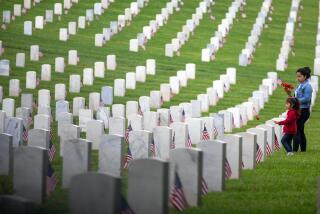Multicultural Manners : Sidewalk Shrines
- Share via
As soon as their plane was declared missing, flowers, lit candles, drawings, poems, messages of love began amassing outside the Tribeca apartment of Caroline and John Kennedy Jr. When their deaths were confirmed, the shrine dramatically grew. Sidewalk shrine-building was a prominent activity after Princess Diana was killed, too, yet one need not be a celebrity to arouse such public response. Sidewalk shrines spontaneously occur at busy intersections or in front of convenience stores, marking sites of shootings and car crashes as well.
Creating impromptu shrines is an evolving U.S. tradition. After the 1995 Oklahoma City bombing, the public transformed the chain-link fence surrounding the rubble into a makeshift memorial wall by attaching cards, photos, American flags, balloons, flowers and teddy bears. Some inner need drove people to this act, which brought comfort to participants and emotional release to observers.
Later, when Timothy McVeigh was found guilty of the bombing, survivors of the blast surrounded a slippery elm tree--the “survivor tree,” located across from the bomb site--and poured plastic bottles of water over its roots. Using water to represent tears, symbolically, the survivors shed their sorrow and simultaneously emphasized life by nurturing the tree. Through this act, they exemplified the human need to create new rituals to fit circumstances.
Norine Dresser’s latest book is “Multicultural Celebrations” (Three Rivers Press, 1999). E-mail: norined@earthlink.net.
More to Read
Sign up for our Book Club newsletter
Get the latest news, events and more from the Los Angeles Times Book Club, and help us get L.A. reading and talking.
You may occasionally receive promotional content from the Los Angeles Times.








